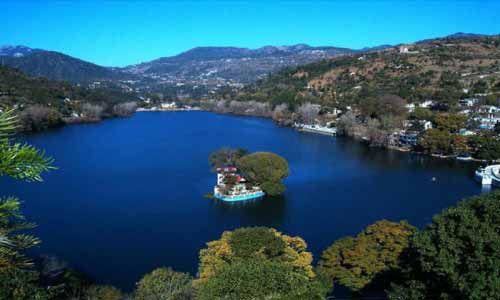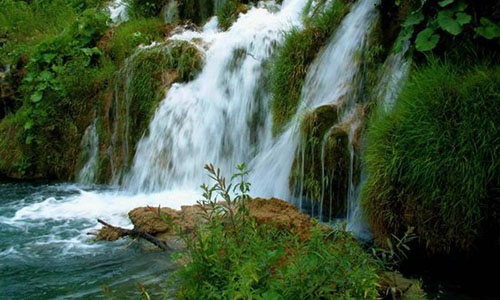Manipur
“Jewel of India”
Manipur Tourism-A Glimpse
 The jewel city of India, Manipur is listed among one of the most beautiful places of India where Mother Nature has been extra generous in her bounty. Least touched and least discovered, Manipur promises to be the great tourist discovery as the state offer endless enjoyment and pleasure with its exotic landscape, undulating hills, green valleys, blue lakes and dense forests. The Keibul Lamjao National Park in Manipur is the only floating national park in the world.
The jewel city of India, Manipur is listed among one of the most beautiful places of India where Mother Nature has been extra generous in her bounty. Least touched and least discovered, Manipur promises to be the great tourist discovery as the state offer endless enjoyment and pleasure with its exotic landscape, undulating hills, green valleys, blue lakes and dense forests. The Keibul Lamjao National Park in Manipur is the only floating national park in the world.
Richly endowed with the natural beauty of waterfalls, lakes, streams, evergreen forests surrounded by nine sub-Himalayan ranges that attract the tourists from all over the world, Manipur is beautiful, calm and serene with its most ecstatic simplicity. Its greenery with the moderate climate makes it attractive to tourists.
Loktak Lake, Sendra Island, INA Memorial, Keibul Lamjao National Park are some of the major tourist attractions; while shopping in Manipur is all about local handicraft, handloom and jewellery which is easily available at Khwairamband Bazar, Tribal Emporium and Sangai Handloom and Handloom House apart from the colourful local shops.
Local Food and Cuisine of Manipur
The food in Manipur is simple, organic and aromatic with local and exotic herbs. There is a certain freshness and zest to this cuisine with relative simplicity in methods of cooking and a unique flavour and fragrance due to the local and seasonal ingredients.
The staple ingredients are rice, fish, usually from a private pond that almost each household has, potatoes along with aromatic herbs and roots also from their own kitchen garden. The dishes generally are prepared without using any oil. Ngri which is prepared by fermentation is the favorite fish of Manipuri people and a true local delicacy that cannot be missed. Nga-thongba (fish curry), Ooti (a typical Manipuri vegetarian dish), Eromba, Chagem pomba (made with fermented soya, mustard leaves) and Chamthong or kangshoi (which is a stew cooked with seasonal vegetables) are the almost essential delicacies of the area. Other than the local preparations, North-Indian and Chinese cuisines are also popular and enjoyed here.
What’s Great?
Quiet and less commercialized, makes for a perfect destination for a serene vacation away from the city chaos. Culturally rich; a treat for tourists who love to explore local cultures and traditions.
What’s not so Great?
Food choices could be very limited for vegetarians. Communication could be a problem in remote areas. The fare for cabs and auto rickshaws is based on distance and negotiations. Outsiders might face a problem with the rates.
For Whom?
If you want to go away to a quiet place right in the lap of nature, Manipur is the place to be. With the increasing awareness and connectivity, it’s becoming a popular choice amongst families. Solo travelers also often head to this part of the country. It’s the kind of place you could go to with a bunch of friends or your special someone and just ease out.
People and Culture of Manipur
The creative, simple, and expressive people of Manipur stand firm with their religious diversity. 60% of the Manipuri population belongs to the Meitei tribe who are Vaishnavite Hindus who believe in Lord Vishnu, the protector in the Hindu Trinity (Vishnu, Brahma and Maheshwar). Kukis of the south and the Nagas of the north are the two main tribes of Manipur among the 30 hill tribes of Manipur. Manipuri people excel in martial arts, hockey, rugby and polo, the people are artistic and creative, and every house possesses a loom, and Manipuris weave with a passion and style, unparalleled by any other state.
The people live music, dance and sports and exhibit a tremendous zest for life. The tribal dances of Manipur are the expression of love, creativity and joy of the tribal people of the state. Citizens in Manipur speak Meitei and Manipuri. English is also understood and spoken by some. Hinduism, Christianity and Maibaism are the three prominent religions in Manipur, and the Nagas worship stones that in their language are referred to as LaiPham. While economically Manipur has poor infrastructure and development has been slow, but culturally, this state is known all over India. Handloom and handicraft products are the forte of the people.
Geography of Manipur
A quaint town in the lesser explored North Eastern side of India, Manipur is often called the ‘Switzerland of the East’. Spread across an area of 22,327 km, the majestic Manipur is bordered by Nagaland and Mizoram on the North and South, and Myanmar and Assam on its East and West respectively. The mesmerizing sight of the mountains in Manipur truly justifies the literal translation of its name, the jeweled town.
History of Manipur
The folklore of Manipur refers to the locals as Gandharvas- a community of musicians and dancers. In epics like the Mahabharata, Manipur is credited as the place where Arjuna met Chitrangada and fell in love with her. The love of Shiva and Parvati has found space in the legendary Khamba- Thoibi love story of Manipur’s traditional texts and verses. During the British rule, the kingdom of Manipur was one of the princely states and is credited to be the point of exchange for trade and culture with the neighbouring countries.
Cheiraoba Festival
Manipur celebrates its local new year with great pomp and show in the month of April. The city is decorated, and everyone comes together to be a part of the festivities. As a part of their belief, you can see locals climbing hills during the festival. It is believed that this will get them good luck and take them to greater heights in life. Cheiraoba is followed by a dance festival showcasing various dance forms including the famous Krishna Raasleela. April happens to be a splendid time for travelers interested in witnessing local art and culture.
Khwairamband Bazaar
This market is run solely by Manipuri women and happens to be one of a kind in the entire country. You can find everything you need here. From fruits and vegetables to clothes, handmade artefacts, local attractions and food. It’s an enjoyable experience to just stroll through the lanes of Ima Bazaar and experience the unique energy here.
Hiyang Tanaba Boat Race
Every year on the 11th day of the local calendar in Manipur, a religious ceremony called Heikru Hidongba is performed at Sagolband in Imphal. The Hiyang Tanaba Boat race precedes this annual ritual at Thangapat Moat, performed as a tribute to Lord Bijoy Govinda. A day before the race, the participants offer invitations to the king and Vishnu as per their tradition. The race happens on a grand scale with people coming in huge numbers to cheer the participants.
Loktak Lake
Located in the Bishnupur district, 53 km away from the state capital, Loktak is the largest freshwater lake in the country. Covering an area of 300 square meters, it is famous for the numerous Phumdis or floating swamps which look like mini islands on the lake.
A paradise for people interested in flora and fauna, Loktak is home to 233 species of aquatic plants, over 100 species of birds and around 500 species of animals including rare ones like Myna and Indian Python. To the south of the lake is the Keibul Lamjao National Park, the only floating wildlife sanctuary in the world which happens to be the home of the endangered state animal of Manipur, Sangai.


